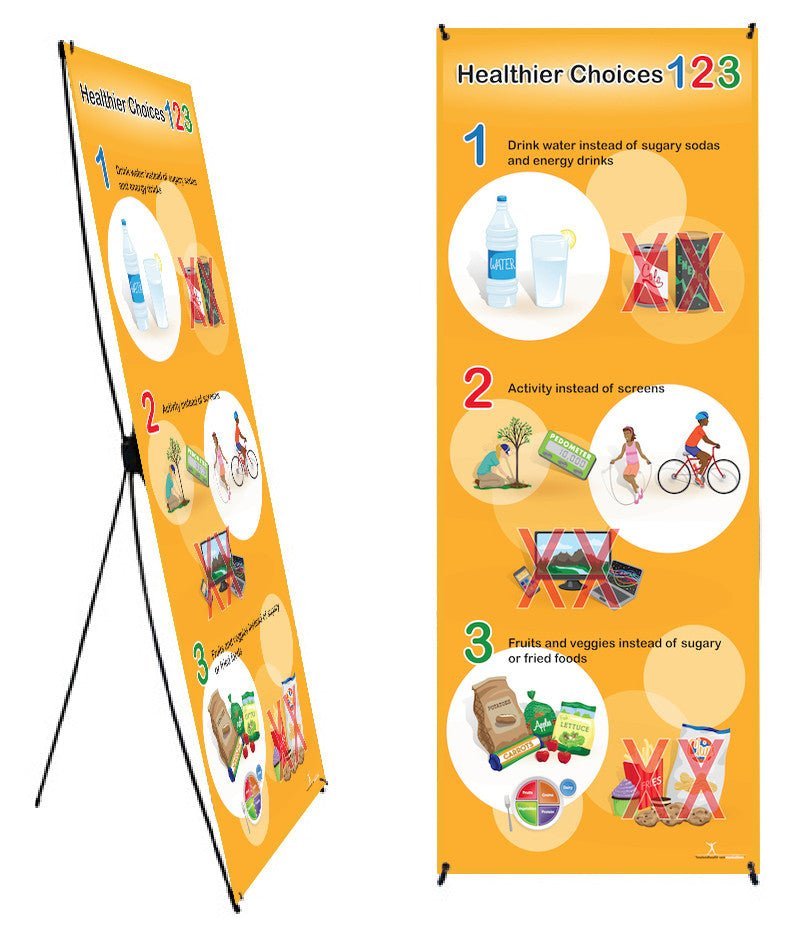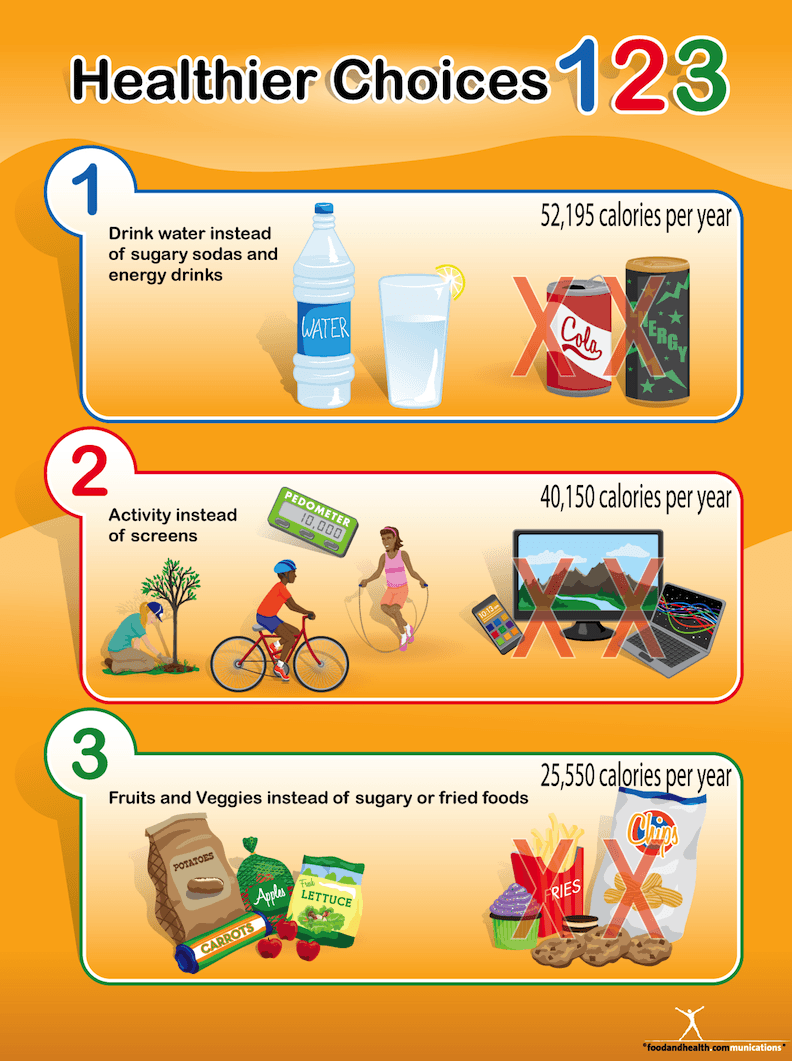At first glance, healthy eating seems so simple. If you want something sweet, we say, try fruit for dessert. So our clients go to the supermarket and what do they see next to the strawberries? Tubs of “strawberry” glaze, void of any fruit. And prepackaged shortcakes. All of a sudden, making a healthy choice isn’t so simple.
This is just one example of how our food choices are influenced by many factors. Things like product placement and marketing make the simple act of buying fresh produce more complicated for consumers.
You can see all the things that influence our food choices on our new poster – The American Diet.
There’s so much information on this poster, it is overwhelming. That’s the point. From social media to GMOs, celebrity diets to infomercials for fat-melting supplements, the American Diet is complicated.
It’s up to us to help people figure it out.
How can we do this? We’re glad you asked. Here are some ideas for you…
- Teach a class using our American Diet PowerPoint presentation. The slides and handouts touch on each of the eight systems that impact the food choices we make today.
- Use The American Diet concept as a project for high school students. Assign each student or small group an area to research. Have them create their own presentations to teach what they’ve learned to the rest of the class.
- Use The American Diet poster to see what people want to learn about. Let them ‘vote’ by choosing one or two ideas from the poster. You’ll find out which topics to feature in your upcoming classes.
- Display The American Diet poster at a health fair. Invite people to write their thoughts on sticky notes and post these for others to read.
In individual counseling or group settings, you can ask some great educational questions to generate discussion:
- Do you find yourself always searching for a magic bullet? For what – weight loss? Strength? Clear skin? To avoid your family’s health history?
- Do nutrition claims like ‘high in protein,’ ‘gluten-free,’ or ‘zero cholesterol’ get your attention? What was the last food advertisement you saw or heard? How do you think it impacts what you eat? How do you know if the claim is true?
- Are you or someone you know on a diet? Is it science-based? What do you think about celebrities and non-health professionals promoting diets? How are they qualified?
- What does convenience mean to you? Are you willing to pay more? Sacrifice taste or nutrition?
- What food culture did your grandparents or great grandparents live in? How is your food culture the same or different?
- What do you think about health-promoting ingredients being added to unhealthy foods, like hot dogs with omega-3 fatty acids or sugary cereal that’s high in fiber?
- What have you heard about genetically modified foods? What are the benefits for you? For the world? Why do people fear GMOs?
- What do you think the people on the poster are doing? Looking up restaurant reviews on their phones? Searching for recipes? Taking pictures of their dinner to post on social media? How do you use your phone when you are eating? Do you order delivery? Grocery shop? Or share photos of your food?
Talking about the topics featured on The American Diet graphic is definitely more complicated than teaching MyPlate or heart-healthy eating. But when consumers are aware of all the factors influencing them, they’ll have the knowledge and insight to make better choices.
Hopefully, they’ll become healthy food and nutrition influencers themselves!













